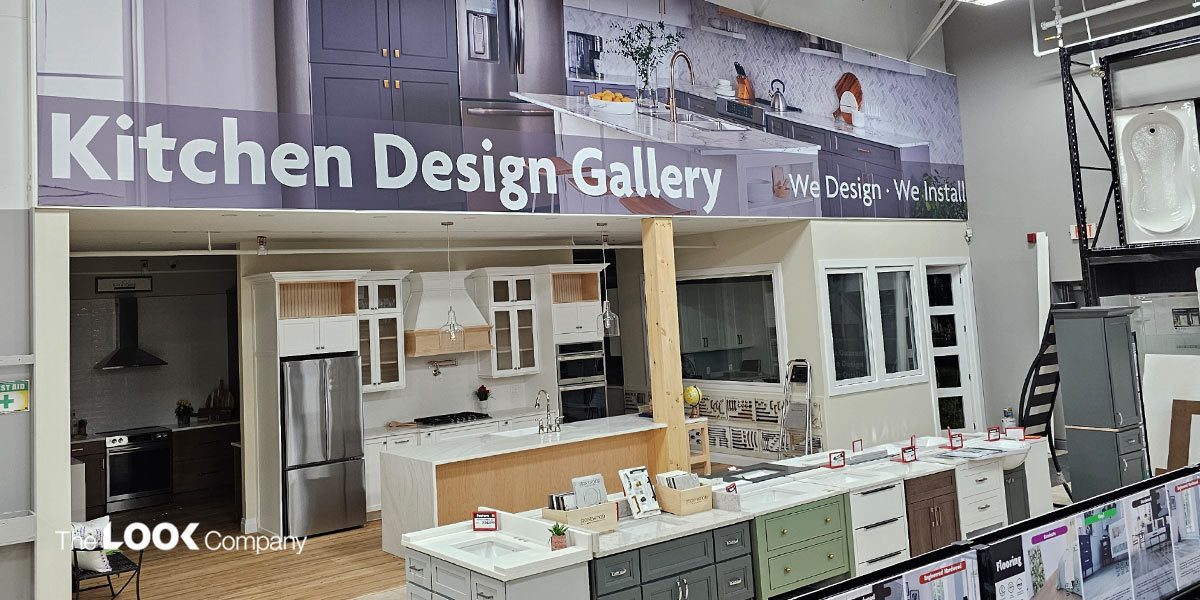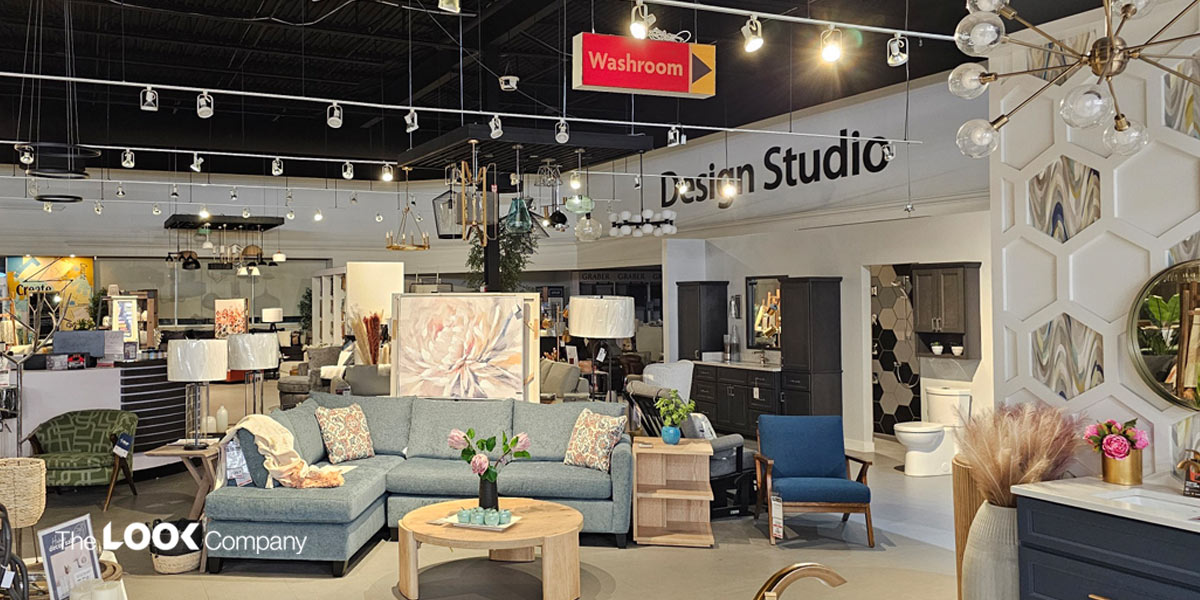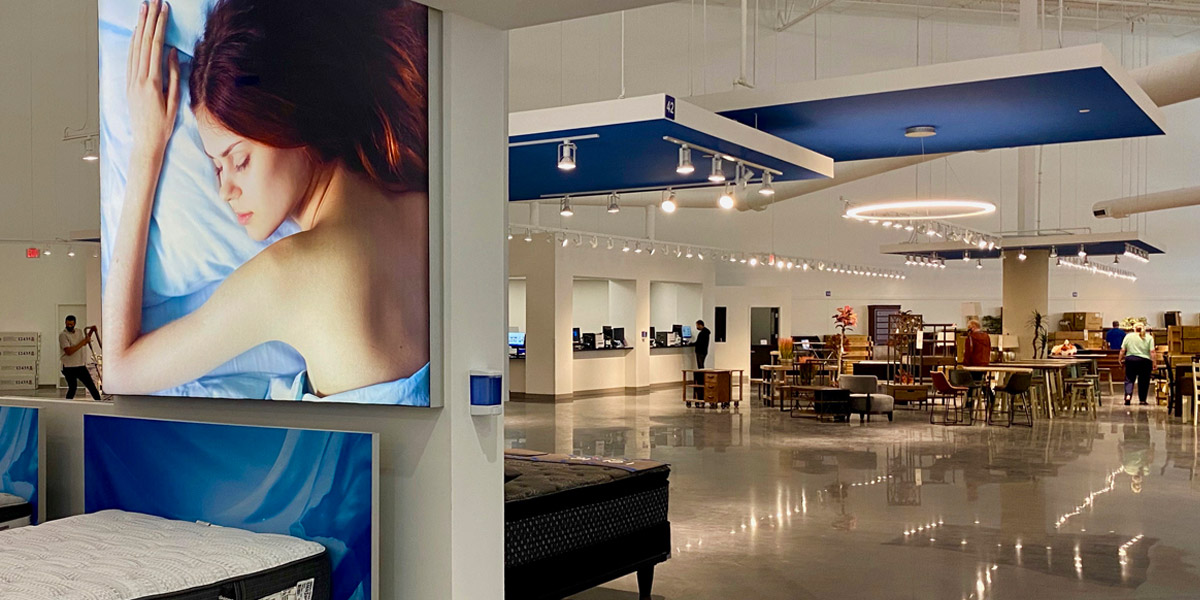Furniture store displays have evolved.
Now, the focus is on crafting a holistic brand experience.
Displays narrate the brand's journey, embedding furniture in a context that resonates with the brand. This approach engages customers with a narrative, enriching their understanding and appreciation of the furniture.
It creates a deeper connection and encourages purchase decisions. 31% of consumers will pay more than their budgeted amount if they find the perfect item.
Our goal is to guide them to that item through effective furniture store displays.
We'll explore how understanding audience aspirations and integrating innovative technologies can create a retail environment that champions brand storytelling and ultimately helps consumers find their ideal furniture pieces.
Understanding Your Audience
Identifying Customer Aspirations and Experiences
Successful furniture showroom retailing starts with understanding who walks through your doors.
Recognize the dreams and lifestyles your customers aspire to.
This knowledge shapes how displays are designed, ensuring they resonate on a personal level. Furniture isn't just an item to own; it's a piece of a desired lifestyle.
By tailoring furniture store displays to reflect these aspirations, stores can create a powerful emotional connection, making the furniture part of the customer's identity and story.

Tailoring Furniture Store Displays to Meet Customer Expectations
Once customer aspirations are understood, the next step is crafting furniture displays that meet these expectations. This involves more than just selecting pieces that appeal to certain tastes; it involves creating an environment that customers can envision as their own.
Displays should invite customers into a story—be it luxury, comfort or innovation. Every element, from lighting to layout, creates an immersive experience that aligns with what customers seek in their lives and spaces.
This strategy of audience understanding and tailored displays creates a shopping experience that’s not just about buying furniture but about bringing a vision to life.
It transforms the store into a place where customers can connect with their aspirations and find the perfect pieces to fulfill them.
Visual Merchandising for Furniture Stores
Utilizing Space Creatively with Modular Display Systems
The creative use of space is paramount.
Modular partitions and display systems offer flexibility and innovation when presenting furniture collections. These elements allow designers to craft ever-changing narratives within the showroom, highlighting the brand's journey and the evolution of its products.
Modular systems enable a dynamic storytelling approach. The layout can adapt to new themes, collections or seasonal campaigns, ensuring the showroom remains fresh and engaging.

Importance of Color, Lighting, and Signage
For furniture store merchandising, color and lighting are aesthetic choices and strategic tools influencing customer perception and behavior. The right combination can set the mood, highlight key products and create a visual flow that guides visitors through the showroom.
Wall signage and lightboxes add another layer of engagement, offering opportunities to effectively communicate the brand story and product information. Together, these elements create a visually cohesive and immersive experience that captures the essence of the brand and appeals to the customer.
Creating Immersive Experiences
Creating immersive experiences in showrooms goes beyond traditional display tactics. Furniture merchandising involves engaging customers through visual, tactile and auditory sensory stimulation.
Designers can leverage technology and innovative furniture display ideas to create environments that fully immerse customers in the brand's world.
Successful strategies include themed sections transporting customers to different environments or interactive displays inviting hands-on exploration.
Innovative Furniture Showroom Display Ideas
Innovative display elements like modular partitions and lightboxes play a crucial role. They define spaces within the showroom and serve as dynamic backdrops for showcasing furniture in context.
Integrating digital technology, such as interactive screens or augmented reality applications, further enriches the customer experience, allowing for personalized interactions and deeper engagement with the products.

Optimizing Store Layout for Maximum Engagement
Optimizing showroom layout is about more than just arranging furniture. It's about creating a journey that captivates and guides customers from the moment they enter.
Entrance strategies, thoughtful floor space planning and strategic aisle placement all contribute to a seamless flow that encourages exploration and interaction.
Effectively using shelves, display units and even the ceiling, walls and pillars can transform ordinary spaces into extraordinary showcases that highlight the brand's unique narrative and product journey.
Leveraging Technology in Furniture Store Displays
Integrating technology into furniture showroom displays marks a revolutionary shift in how customers interact with furniture brands.
Leveraging digital advancements opens up new avenues for creating engaging and interactive experiences that can significantly enhance customers' connections with the brand and its products.
Digital Screens and Interactive Applications
Incorporating digital screens and interactive applications within the showroom can transform passive viewing into an engaging, hands-on experience. Digital screens can serve multiple purposes, from showcasing product ranges and features to providing immersive virtual tours of how furniture pieces can enhance various living spaces.
On the other hand, interactive applications allow customers to customize furniture selections according to their preferences in color, material or design, making the shopping experience highly personalized and engaging.
Omnichannel Approaches
An omnichannel approach integrates the physical showroom experience with online channels, providing a seamless customer journey.
QR codes displayed alongside furniture can direct customers to online resources for more detailed product information, reviews or even augmented reality views of how the item would look in their own space.
This strategy enriches the in-store experience and bridges the gap between the physical and digital realms, catering to the modern shopper's need for comprehensive, flexible shopping options.
The Future of Furniture Retail and Technology's Role
The future of furniture retail is deeply intertwined with omnichannel strategies, emphasizing online and in-store experiences. This approach ensures consistency across all customer touchpoints, improving engagement and personalization.
QR codes, for example, can bridge the gap between physical displays and digital content, offering detailed product insights and virtual room setups.
Omnichannel tactics extend beyond mere convenience, enabling personalized customer interactions through data-driven insights. These strategies use technology to streamline the shopping experience, from online browsing to in-store visits, making it more intuitive and enjoyable.

TLC: Using our Strategic Showcase Techniques for Your Furniture Store Displays
Exploring strategic showcase techniques highlights the power of storytelling and immersive experiences in furniture retail.
Successful furniture displays do more than just show products; they build a connection with customers by weaving the brand's story into the retail space.
The Look Company offers innovative solutions. Our expertise in modular display systems, custom lightboxes, signage and more allows us to create engaging, adaptable spaces that resonate with customers.
For retailers and designers, the message is straightforward: Embrace innovation and adaptability. Doing so will improve the shopping experience and strengthen the relationship between your brand and your customers.
Contact one of our experts today to see how you can showcase your furniture store displays with our services.
